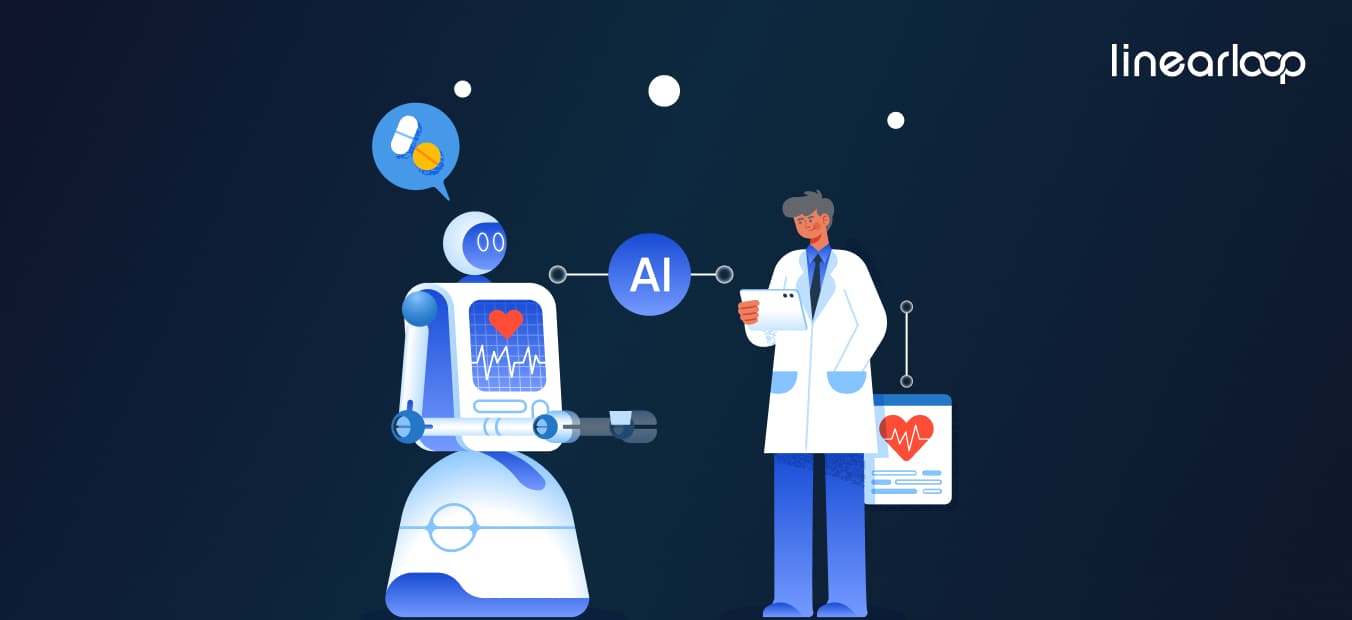Mayank Patel
Jun 28, 2024
5 min read
Last updated Jun 28, 2024

The growth in technology has impacted various industries and healthcare is no exception. Among the most promising technological innovations, Generative AI (Artificial Intelligence) has the potential to reshape the healthcare and medicine sectors.
Generative AI is a subset of AI that focuses on generating new content like images, text, and complex data by learning from existing data. It is not only just about automating tasks but also about creating new possibilities for patient care, medical research, healthcare management, and many more.
The importance of AI in healthcare and medicine industry cannot be neglected. With a constant demand for smooth and effective healthcare services, AI can be helpful improve diagnostic accuracy, optimize treatment plans, and simplify administrative processes.
In this blog, we will explore applications of generative AI in healthcare such as drug discovery, personalized medicine, medical imaging, and virtual health assistants. We will discover benefits like improved patient outcomes and cost reductions, while also addressing challenges such as data privacy and ethical concerns.
Generative Artificial Intelligence (AI) showcases a unique approach to machine learning and artificial intelligence. Generative AI focuses on creating new content by learning from existing data and here you can learn more about the core principles of generative AI & how it is different from traditional AI.
Generative AI is changing healthcare by providing unique solutions that improve efficiency, accuracy, and personalization in patient care. Here are the key applications of generative AI in healthcare:
1. Drug Discovery and Development: The traditional drug discovery process is typically lengthy and expensive. However, Generative AI offers a breakthrough by predicting interactions between drugs and proteins. By analyzing vast databases of chemical compounds and biological targets, it accelerates the identification of promising drug candidates.
2. Personalized Medicine: Gen AI plays a crucial role in creating personalized treatment plans according to the patient’s genetic structure and medical history.
3. Medical Imaging and Diagnostics: Generative AI upgrades medical imaging by improving the accuracy and speed of image analysis which helps to detect and diagnose diseases.
4. Virtual Health Assistants: With generative AI the creation of virtual health assistants that interact with patients to provide support and guidance has become much easier and they reduce the burden on healthcare providers.
5. Genomics and Precision Medicine: During genomic research, generative AI analyzes complicated genetic data to find insights to inform individualized therapies and advanced medicines with precision.
Read More: What is the Medical Software Development Process?
Generative AI offers various advantages that can completely redefine the healthcare industry. It includes benefits like better patient outcomes, cost reduction, and improved efficiency for various healthcare processes.
1. Better Patient Outcomes: Gen AI improves the quality of healthcare by increasing the accuracy and efficiency of diagnostics, treatment planning, and patient care.
2. Cost Reduction: It helps healthcare providers reduce their costs by simplifying processes, optimizing resource use, and minimizing unnecessary expenses.
3. Improved Efficiency: Gen AI improves the efficiency of healthcare systems by simplifying various processes and providing more accurate decision-making.
There are many benefits of generative AI in healthcare industry but it also comes with several challenges and risks that must be addressed to ensure the safety of patients. Here are some critical Gen AI challenges that you need to look at:
1. Data Privacy and Security: The privacy and security of patient data is considered one of the most common challenges that you face while implementing generative AI in healthcare.
2. Ethical and Legal Issues: It also raises huge ethical and legal issues that should be handled carefully.
Partner with Linearloop to leverage our expertise in the complex healthcare industry and harness the vast potential of generative AI. Benefit from tailored services and solutions designed to empower healthcare providers to implement and maximize the advantages of generative AI.